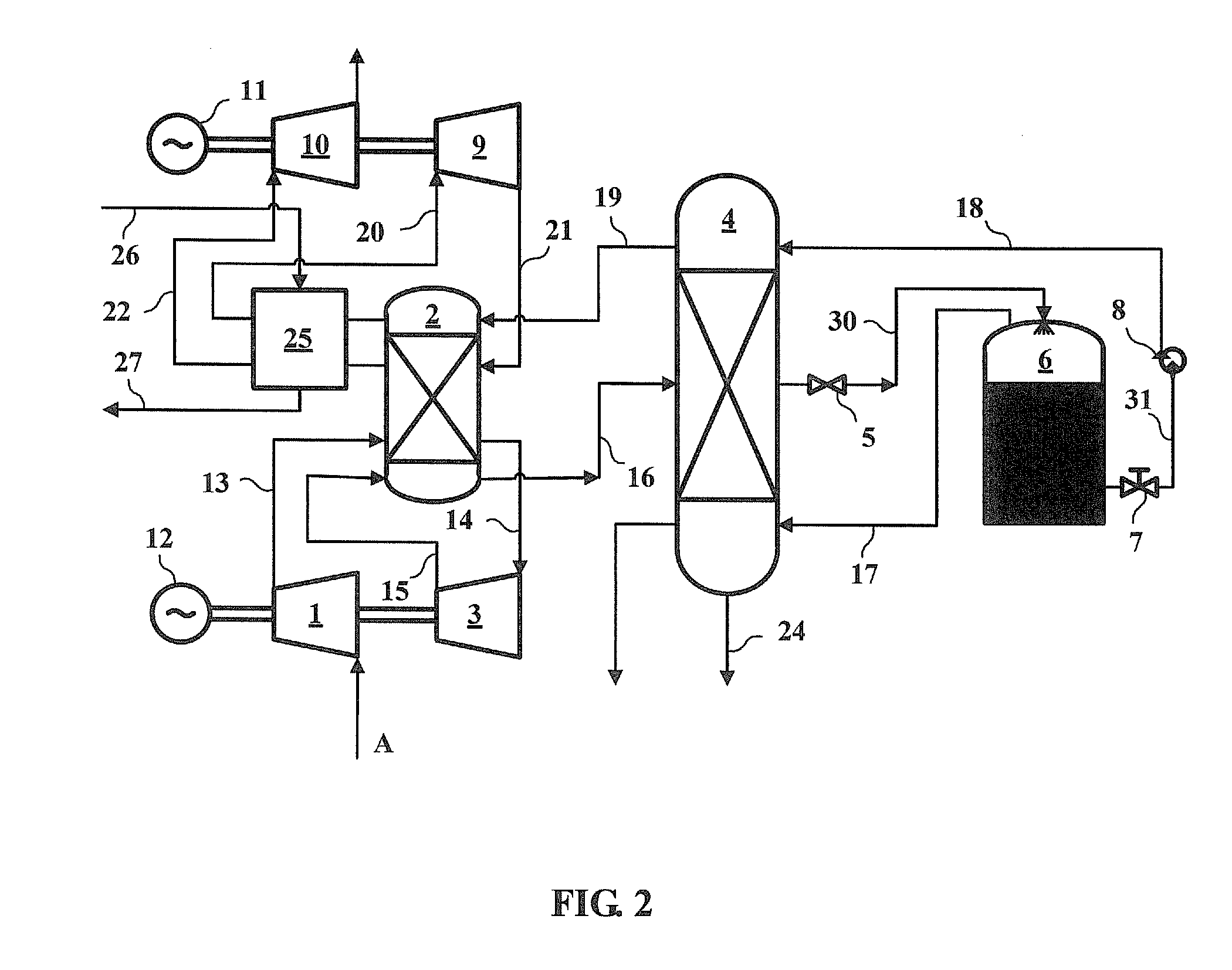Energy storage system using supercritical air
a supercritical air and energy storage technology, applied in the direction of fluid couplings, lighting and heating apparatus, couplings, etc., can solve the problems of inability to recycle, unstable energy supply, and inability to meet the needs of large-scale production, and achieve high energy density, high efficiency, and the effect of high efficiency
- Summary
- Abstract
- Description
- Claims
- Application Information
AI Technical Summary
Benefits of technology
Problems solved by technology
Method used
Image
Examples
first embodiment
[0071]FIG. 1 shows the energy storage system using supercritical air. The system includes a low-pressure compressor 1, a heat exchanger and storage device 2, a high-pressure compressor 3, a cold exchanger and storage device 4, a throttle valve 5, a cryogenic tank 6, a valve 7, a cryogenic pump 8, a high pressure expander 9, a low-pressure expander 10, a generator 11, a drive unit 12 and air A. The system may further comprise a plurality of pipes, such as those denoted by 13, 14, 15, 16, 17, 18, 19, 20, 21, 22, 23, 24, 30 and 31.
[0072]In this example, the drive unit 12 is connected with the compressors 1 and 3 by a common transmission shaft, and the generator 11 is connected with the expanders 9 and 10 by a common transmission shaft. The low-pressure compressor 1 and high-pressure compressor 3 are connected to the heat exchanger and storage device 2 by the pipes 13 and 14, 15, respectively. The air A flows into the system at an inlet of low-pressure compressor 1. The heat exchanger a...
fourth embodiment
[0083]In the fourth embodiment, the wind energy is directly used to drive the compressors and is not needed to be converted into electricity. The different streams of compressed air are transferred to the heat exchanger and storage device 2 via pipes respectively so as to store compression heat therein. As the compression occurs in different stages and different places, a portion of the compression heat is dissipated during the transferring of working air. External heat resource, such as waste heat and residual heat, can be added into the energy storage system via pipe 2 or additional heat can be added to the heat exchanger and storage device 2 through heating by use of off-peak electricity C.
PUM
 Login to View More
Login to View More Abstract
Description
Claims
Application Information
 Login to View More
Login to View More - R&D
- Intellectual Property
- Life Sciences
- Materials
- Tech Scout
- Unparalleled Data Quality
- Higher Quality Content
- 60% Fewer Hallucinations
Browse by: Latest US Patents, China's latest patents, Technical Efficacy Thesaurus, Application Domain, Technology Topic, Popular Technical Reports.
© 2025 PatSnap. All rights reserved.Legal|Privacy policy|Modern Slavery Act Transparency Statement|Sitemap|About US| Contact US: help@patsnap.com



